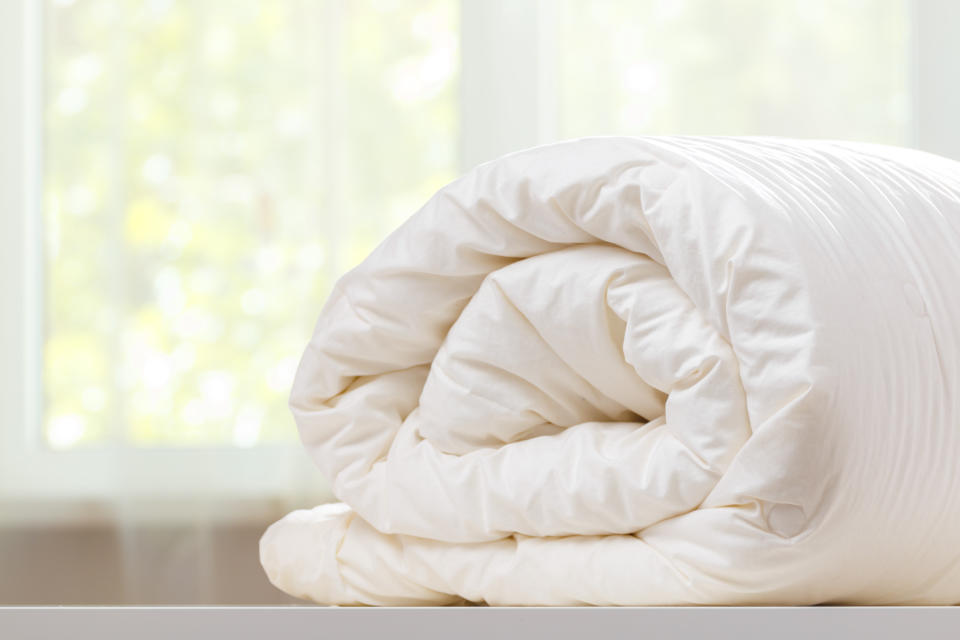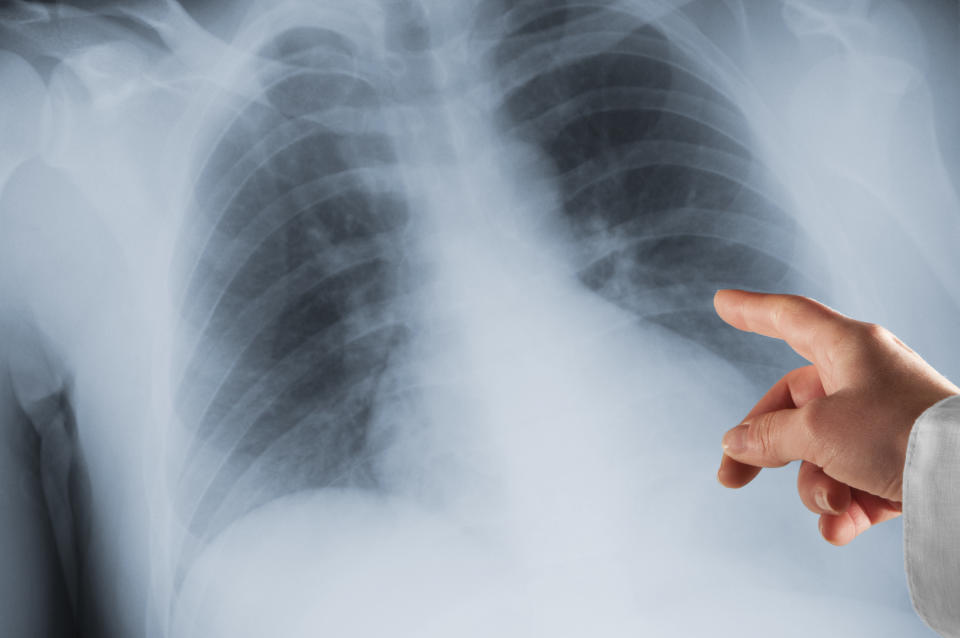What The Health?! Can feather duvets really cause lung disease?

Can leftover spaghetti really kill you? Can you actually cough up a blood clot in the shape of your lung? In Yahoo Lifestyle Canada‘s newest series, What The Health?!, we ask doctors to weigh in on odd health news stories and set the record straight. Be sure to check back every Friday for the latest.
When you’re feeling horribly unwell, all you want to do is crawl into bed. Unbeknownst to a 43-year-old Scottish man, bed was exactly what was making him so sick. He wound up with a lung injury that caused months of breathlessness, fatigue, and nausea.
ALSO SEE: What The Health?! Can taking birth control really lead to blood clots?
The cause? His fluffy duvet and pillows.
Martin Taylor’s official diagnosis, which was only reached after multiple doctor’s visits and some medical sleuthing, was “feather duvet lung,” a form of hypersensitivity pneumonitis.

It started suddenly in 2016, when Taylor found himself out of breath, dizzy, and exhausted after event minor physical exertion.
“Two months after the onset of the symptoms, I was unable to stand or walk for more than a few minutes at a time without feeling like I was going to pass out,” Taylor said in a recent case study published in the journal BMJ Case Reports.
ALSO SEE: What The Health?! Woman develops nail fungus after trendy 'dip powder' manicure
Taylor, a non-smoking software engineer, had to take time off work because he was so ill. During the day, he slept on the sofa.
“We thought the best thing at night would be to get upstairs to bed,” Taylor told the National Post. It took 30 minutes to climb the stairs. “A couple of steps on the staircase and I was really feeling quite dizzy and sick, and I’d sit down and take five minutes to muster up the will to tackle another couple of steps.

“Of course, we didn’t know at the time that by me going to bed, I was actually making the problem worse,” he said, noting he woke up constantly throughout the night feeling as if he was suffocating.
After three months of symptoms, Taylor went to his doctor. A radiologist read his chest X-ray as normal, but his family doctor wasn’t convinced, and contacted a nearby urgent respiratory clinic. He spoke to Dr. Owen John Dempsey, a consultant chest physician at BMI Albyn Hospital in Aberdeen and coauthor of the case study.
ALSO SEE: What The Health?! Woman removes four live worms from her eye after jogging
Making the diagnosis was “a bit like a jigsaw,” the report states. One of the first clues was Taylor’s blood work, which showed his immune system was exposed to avian protein. But Taylor didn’t have any birds at home, just a cat and dog.
Dempsey kept probing for an environmental trigger. Taylor lived in a warm, dry house with his wife; he hadn’t travelled to a foreign place, didn’t use drugs, and worked in an office with no obvious exposures.
Then, Dempsey asked about the couple’s bedding and learned they had recently replaced their synthetic covers with a feather duvet and feather pillows.

Also known as “bird fancier’s lung,” feather duvet lung results from inhaling antigens such as bird proteins from duck or goose feathers found in duvets and pillows.
Symptoms of hypersensitivity pneumonitis (HP) include shortness of breath, cough, and fever, which occur within hours of exposure to the offending antigen, according to the Canadian Respiratory Journal. Continuous contact with the antigen causes the airways to become inflamed, leading to progressive lung scarring or even permanent lung damage. Also called extrinsic allergic alveolitis, the immune-system disorder was first described in farmers more than 100 years ago.
ALSO SEE: What The Health?! British teenager paralyzed after falling from his couch
“There’s a specific protein or antigen that is part of the feathers of birds, and certain people’s immune systems will react in a dysfunctional way to that, creating inflammation that then can turn into scar tissue over time with ongoing exposure,” says Dr. Christopher Ryerson, a respirologist and associate professor at the UBC Centre for Heart Lung Innovation in Vancouver.

It’s hard to say how prevalent feather duvet lung is, since it’s a subset of a HP. Besides avian protein, HP can also be caused by exposure to bacteria, fungi, or molds, according to the National Heart, Blood, and Lung Institute. Sources include animal furs, air conditioners, humidifiers, and other ventilation systems; contaminated foods such as cheese, grapes, barley, and sugarcane; contaminated industry materials such as sausage casings or corks; hardwood dusts; hay; or hut tubs.
HP as a whole accounts for about seven percent of cases in the Canadian Registry for Pulmonary Fibrosis, based on about 3,500 patients annually, Ryerson says.
ALSO SEE: What The Health?! Woman's ruptured brain cyst originally misdiagnosed as migraines
Diagnosing HP can be tricky for non-specialists.
“Whether you call it feather duvet or HP or pulmonary fibrosis, all of these conditions have relatively nonspecific symptoms that most often include shortness of breath and cough and sometimes other systemic, vague symptoms,” Ryerson says. “Usually by the time diagnoses are made, patients have had symptoms for quite a while, often up to a year or two, sometimes longer.
“Usually other things are considered first, like heart disease, emphysema, and asthma,” he adds.

Treatments include removing the trigger from the environment and pharmacotherapy, often in the form corticosteroids, which suppress the immune system to decrease inflammation, which then reduces the rate of progression of scarring.
Other therapies include exercise training, the use of oxygen, and vaccinations to prevent infection. Sometimes, a lung transplant is necessary. “It often doesn’t progress to that point, but it certainly can,” Ryerson says.
ALSO SEE: What The Health?! Mom of two nearly loses leg from hot tub infection
The Scottish case isn’t the first to be documented. Ryerson coauthored a study published in Respiratory Medicine Case Reports in 2014 about a B.C. man who acquired HP from his down sleeping bag. “Whenever he went camping with that sleeping bag he’d end up having a flare of the same disease,” Ryerson says.

As for Taylor, he was advised to remove the offending antigen from his home — so no more down bedding. His symptoms began to improve rapidly. After six months of treatment with steroids, he felt completely normal and continues to feel well.
Dempsey says that, although rare, HP is clearly underrecognized.
“You shouldn’t crawl into your duvet and be afraid of dying,” Dempsey says. “But if you develop cough and breathlessness that don’t go away, it’s worth asking a doctor ‘Could it be feather duvet lung?’”
Let us know what you think by commenting below and tweeting @YahooStyleCA! Follow us on Twitter and Instagram.



